The Castle of Santa Barbara in Alicante stands on the summit of Mount Benacantil located in the city center, from where you can admire a charming view of the city, the port, and the sea.
Thanks to its advantageous location, the castle was an important strategic site during the reign of the Moors who founded the fortress and in subsequent periods of the country’s history. We’ve already talked about Alicante before, today it’s time for one of its jewels.
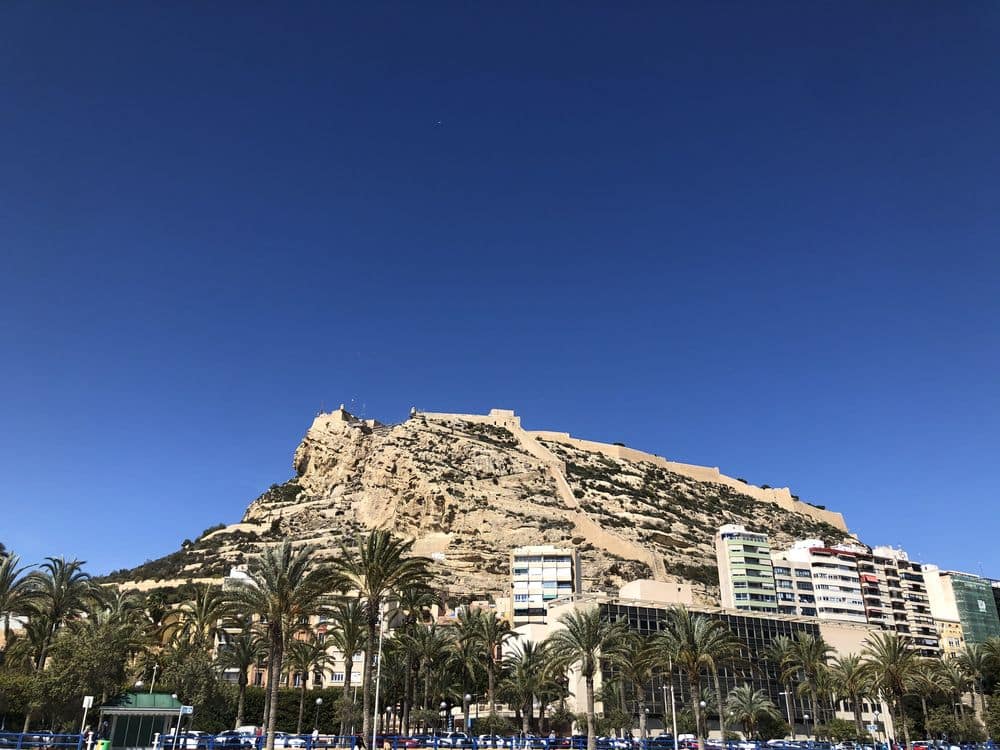
Index
The Moor’s Face
Locals claim that from a certain area of the city, in the contours of the mountain, you can see the Moor. Mount Benacantil even has an unofficial name – the Moor’s Face, which is associated with an ancient urban legend that tells of the tragic love between a Moorish princess and a young Spanish nobleman. The old Moor, the woman’s father, executed the young man, and the princess, distressed with grief, threw herself into the sea from a cliff. Then, in the contours of the mountain, the features of a cruel father appeared.
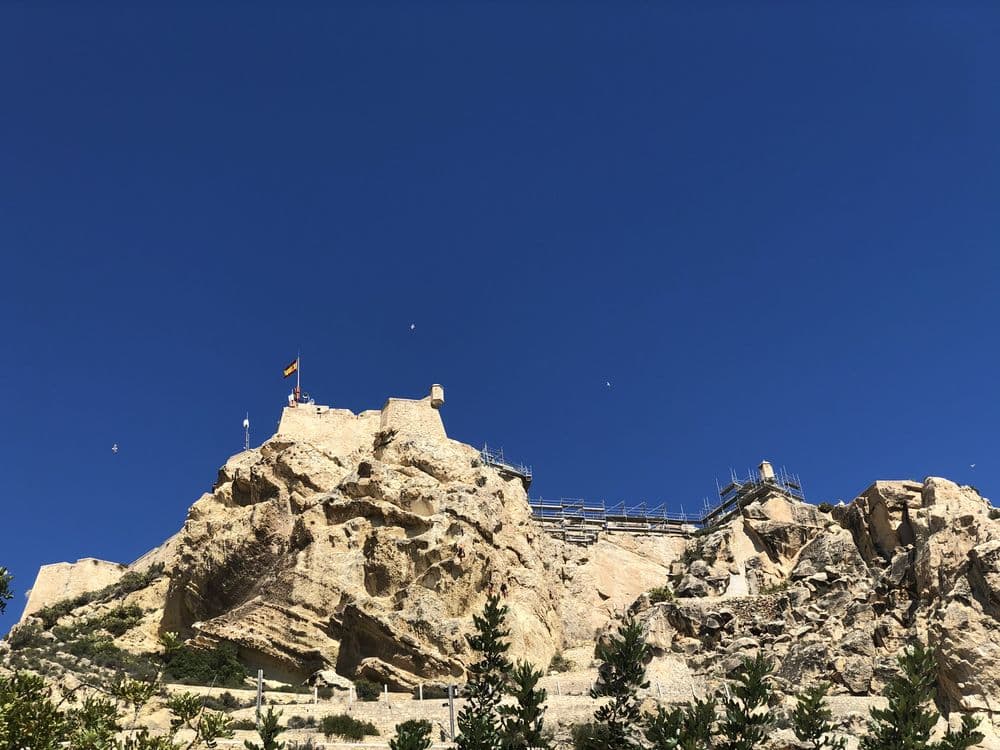
How to Get Up to the Castle of Santa Barbara
Although the mountain seems high, and the castle on its summit looks tiny and so distant, it is possible to climb Mount Benacantil and walk to the Castle of Santa Barbara on foot, in just 10-15 minutes from the center of Alicante. There are both free and paid ascents, via high-speed elevators.
Paid high-speed elevator to the fortress of Santa Barbara
The entrance to the high-speed elevator, which takes only a minute to go up to the top of the mountain and enter directly into the heart of the Castle of Santa Barbara, is located on Jovellanos Street, opposite Postiguet beach.
The elevator is paid, the cost is 2.70 euros per person. Payment through the terminal. Children under 4 years old and people over 65 years old enter for free. The paid elevator operates every day: from 10:00 to 19:45. From 19:45 to 23:10, going up and down in the elevator is free. From 23:10 to 23:30 the elevator only works for going down, also for free. This is the only thing you have to pay for, not counting souvenirs and coffees. Everything else in the castle (viewing, exhibitions, museums) is free.
Attention! At the moment, due to coronavirus, the elevator is not working.
Free ascent to the fortress of Santa Barbara
Climbing Mount Benacantil and entering the Castle of Santa Barbara is completely free. It only takes 10 to 20 minutes to cross the Santa Cruz area. Santa Cruz is the oldest neighborhood in the city, which has preserved the lifestyle of medieval Spain, a very picturesque place.
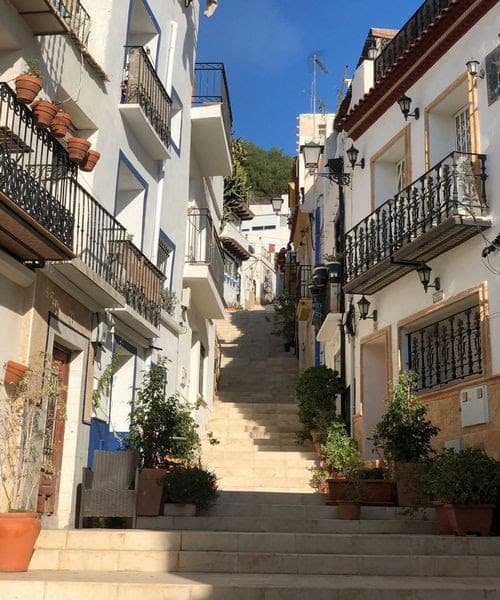
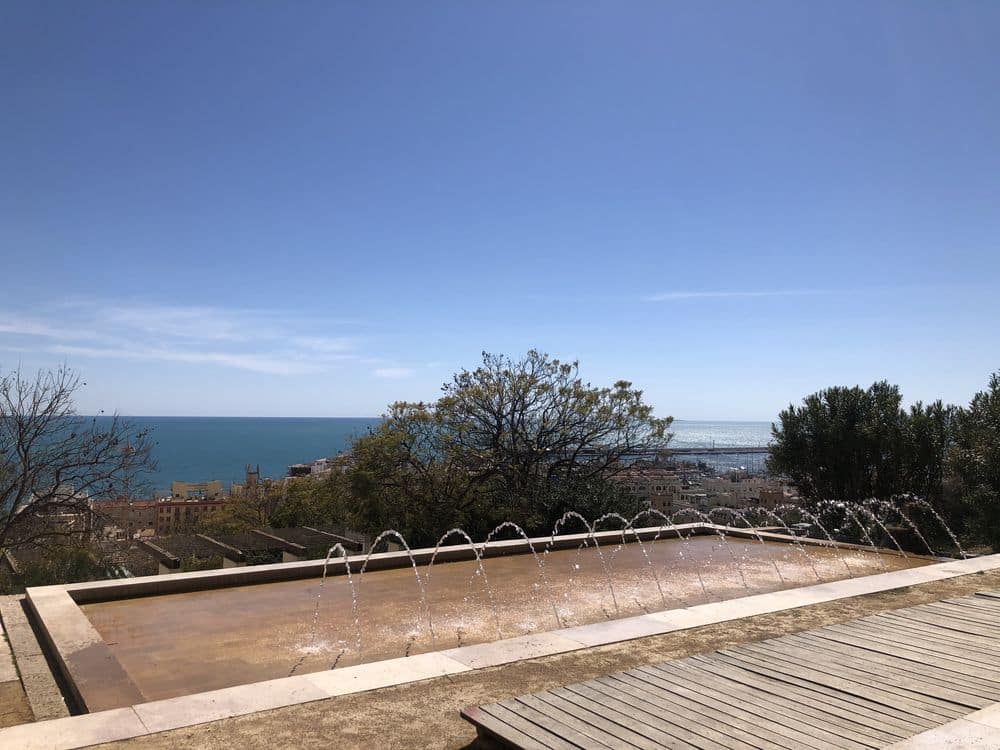
Further up the mountain slope, through Ereta Park to the central entrance of the castle. There is a lot of greenery in the park, beautiful flowers with a watermelon scent grow, there is a fountain, and from spots located at different heights, a panorama of the sea and the city of Alicante opens up. The ascent to the mountain is equipped with paths without steps. It is very convenient to go up and down.
It’s true that in some places you still have to overcome several sections with steps, sometimes even steep ones, but thanks to this, the climb becomes exciting. Additionally, only by walking can you see Monte Benacantil and Alicante Castle from different angles and peaks.
Furthermore, it is possible to drive up to the fortress through the main entrance to Santa Barbara Castle. Behind the gate, there is a first observation platform and free parking
History of Santa Barbara Castle
Santa Barbara Castle in Alicante was built in the 9th century by the Arabs and for several centuries was an impregnable citadel that prevented the complete expulsion of the conquerors from the country. In December 1248, the castle was captured by the troops of Prince Alfonso, son of Ferdinand of Castile, later known as Alfonso X the Wise. In commemoration of the brilliant victory on Saint Barbara’s Day, the fortress received the name Santa Barbara.
Almost half a century later, in 1296, Santa Barbara Castle was captured by the troops of King James II of Aragon, the Just, under whose orders a large-scale reconstruction and reinforcement of the castle began. The work was carried out for almost a hundred years and was completed during the reign of King Peter IV. At the beginning of the 16th century, by order of King Charles I, reinforcement works of Santa Barbara fortress were carried out. New buildings appeared in the castle territory from 1562 to 1580.
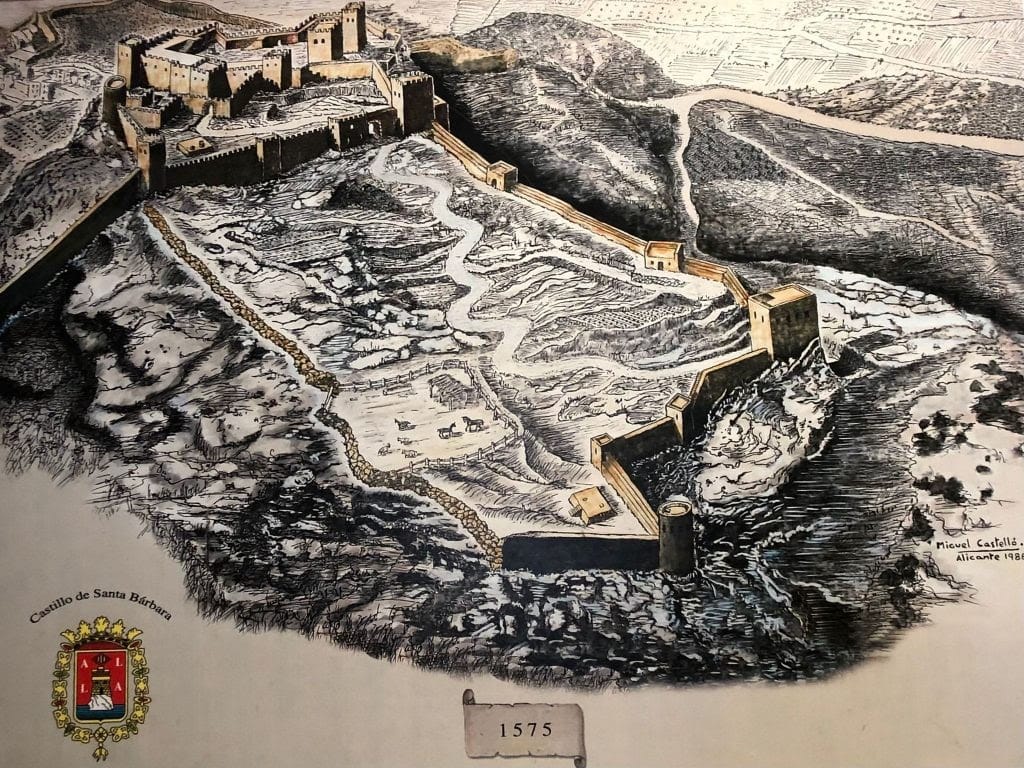
Santa Barbara Castle in Alicante played an important role in the defense of the city during the wars that arose in different periods of Spanish history. It received significant damage in 1691 during the bombardment of the city by a French squadron. No less damage was caused during the Spanish War of Succession in 1707-1709.
During Colonel Pantaleon Bonet’s uprising against General Baldomero Espartero’s regime in January 1844, the castle fell into the hands of the rebels, but the betrayal of one of the colonel’s supporters sealed the fate of rebel Bonet and his followers. The fortress fell, the uprising was suppressed, and Bonet and all the rebels were brutally executed.
The castle suffered severe damage during the civil war of 1873 when it was bombarded from the sea by the battleship Numancia, captured by the rebels of Cartagena.
At the end of the 19th century, during the reign of Alfonso XIII, Santa Barbara Castle in Alicante came under the control of the municipal authorities. After restoration work, the fortress became a prison for several decades. During the civil war of 1936-1939, political prisoners – Republicans and opponents of General Franco – were held there. Drawings and inscriptions scribbled by prisoners of the Franco regime are still preserved on the castle walls.
What to see in Santa Barbara Castle
- Medieval walls and towers
- The “Countermine”. War of Succession (18th century)
- Dungeons
- Military Engineers Park (18th century)
- Castle exit to the sentry path Noble Hall, former hospital
- Castle entrance during the 16th century
- Alcazaba’s Parade Ground
- Medieval
- Castle Governor’s House
- Castle’s “Macho” enclosure
- Archaeological remains of the Medieval Alcazaba
- Parade Ground
- Philip II Hall (“A City is Born” Exhibition)
- Old kitchens
- Guard corps. Exhibition hall
- Cistern
- Old exit to the lower bastion
- Dungeons
- Queen’s Bastion (16th century) and Castle prisoners’ graffiti
- Ruins of Santa Barbara Chapel (18th century)
- Gunpowder store (18th century)
- Moat, wall and “La Torreta”
- Santa Ana Bastion (16th century)
- Mine Bastion
- Ruins of the Castle’s Bakery
- “Bon Repós” Ravelin (18th century)
More photos of Santa Barbara Castle
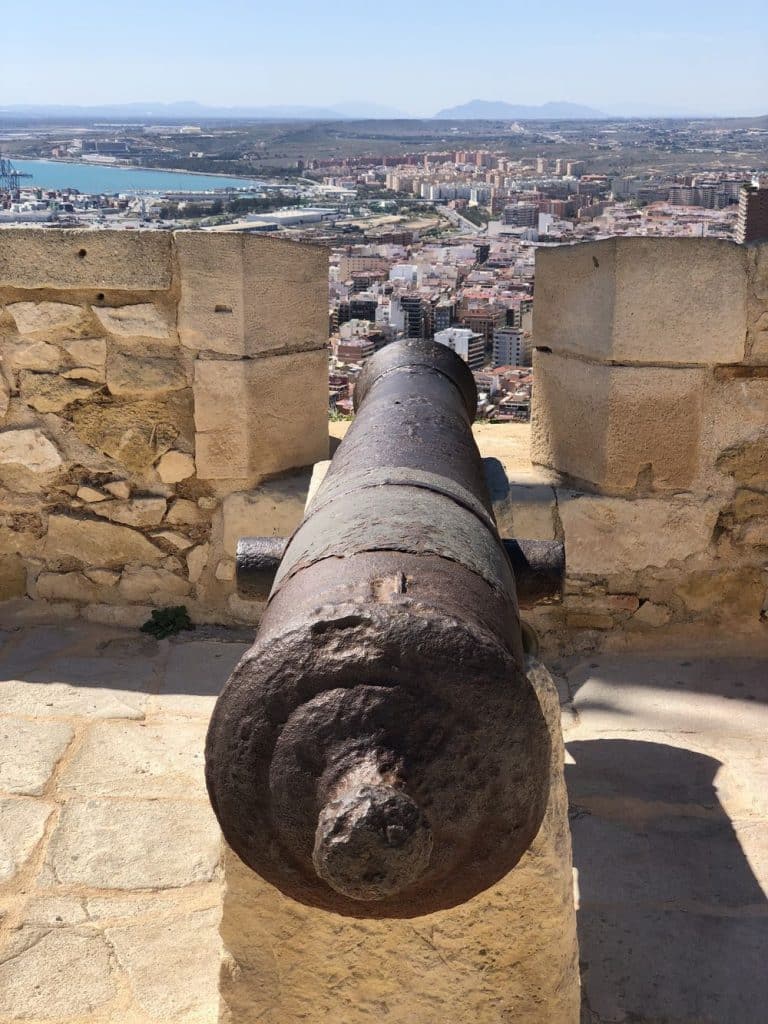
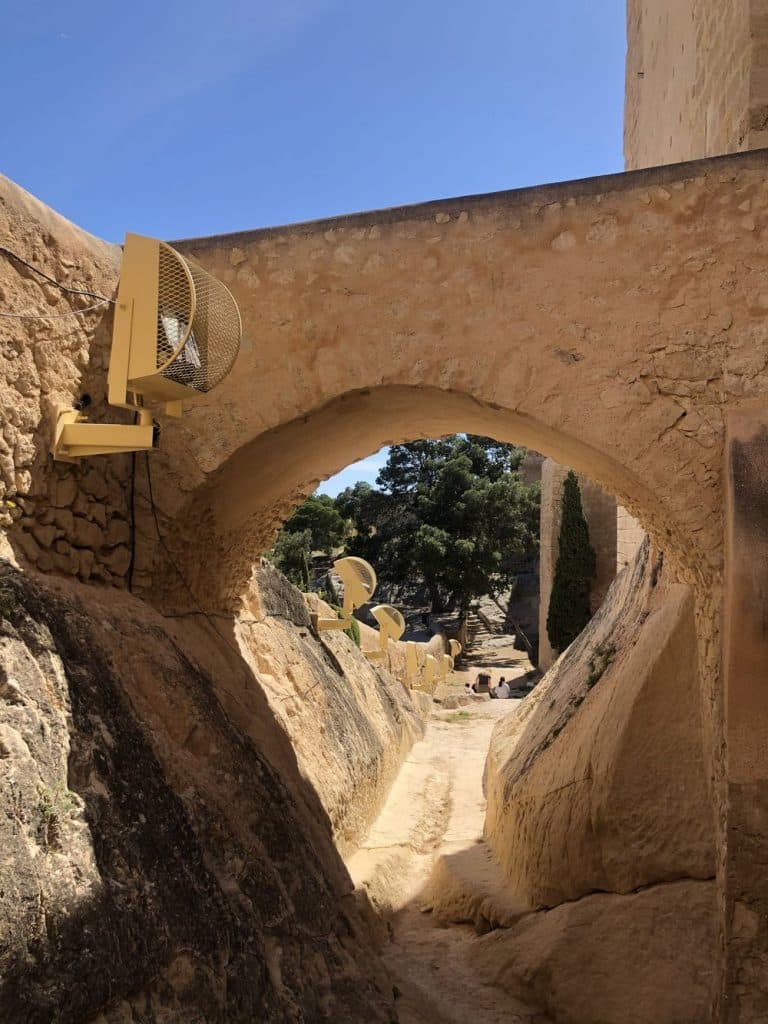
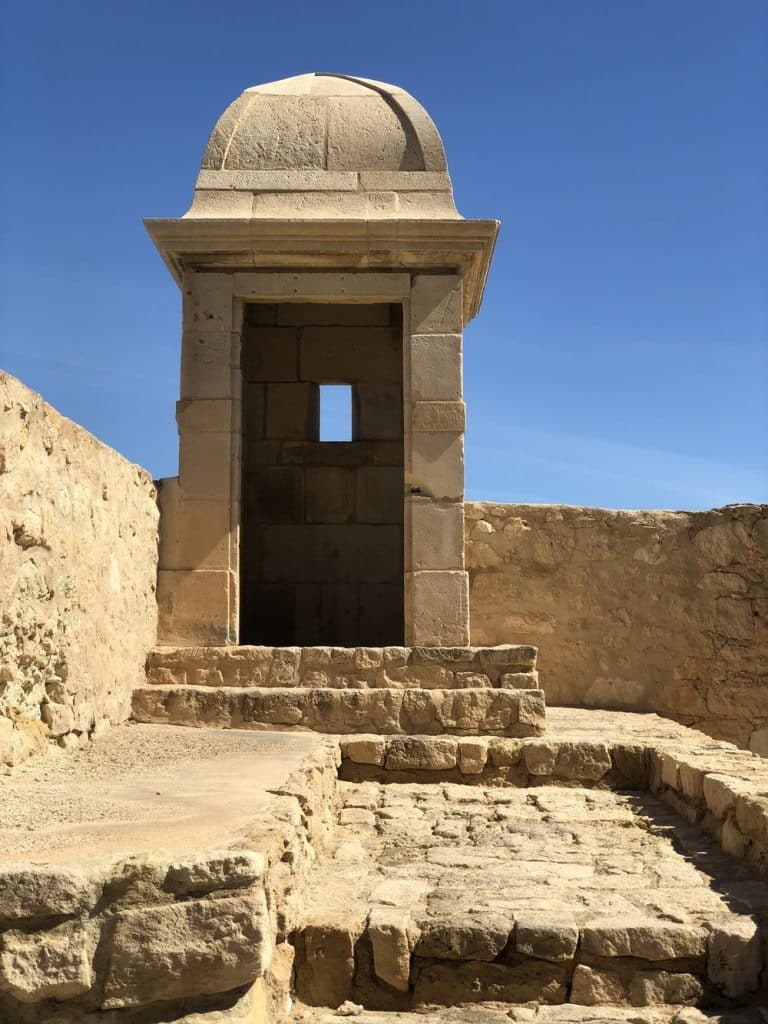
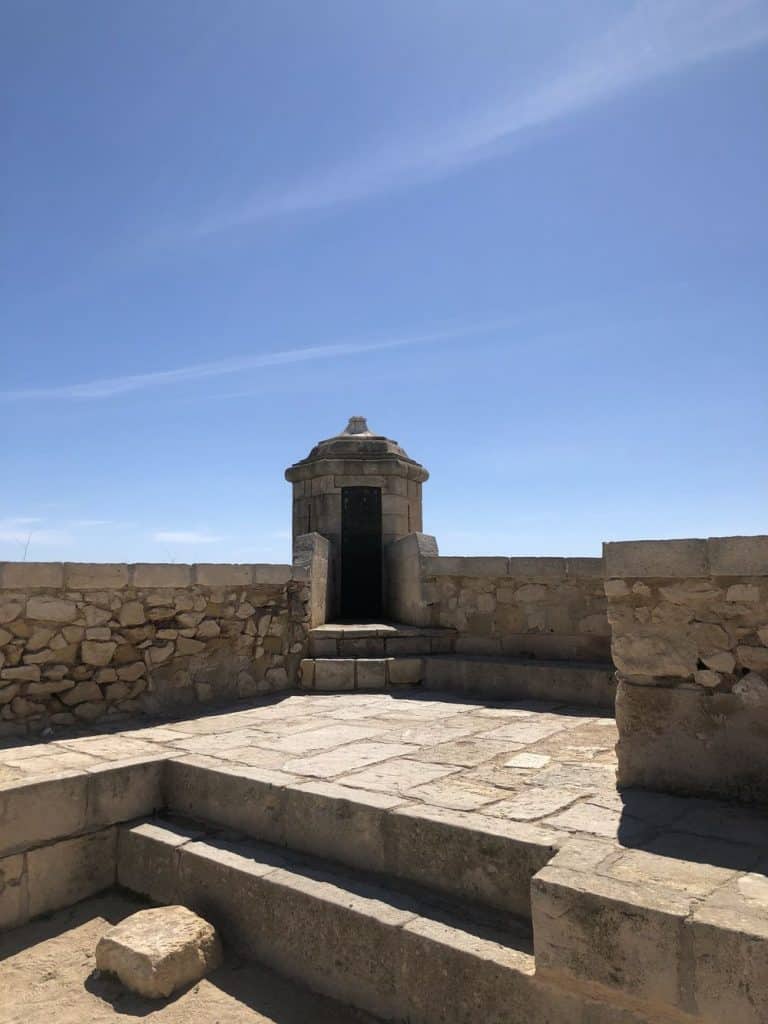
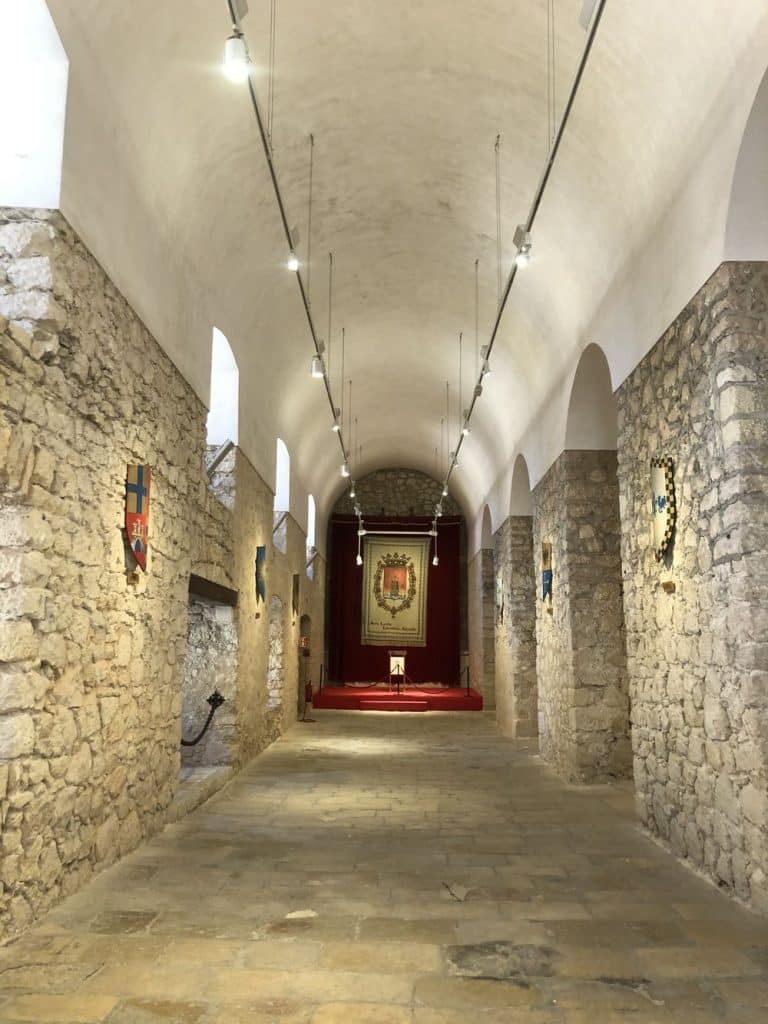

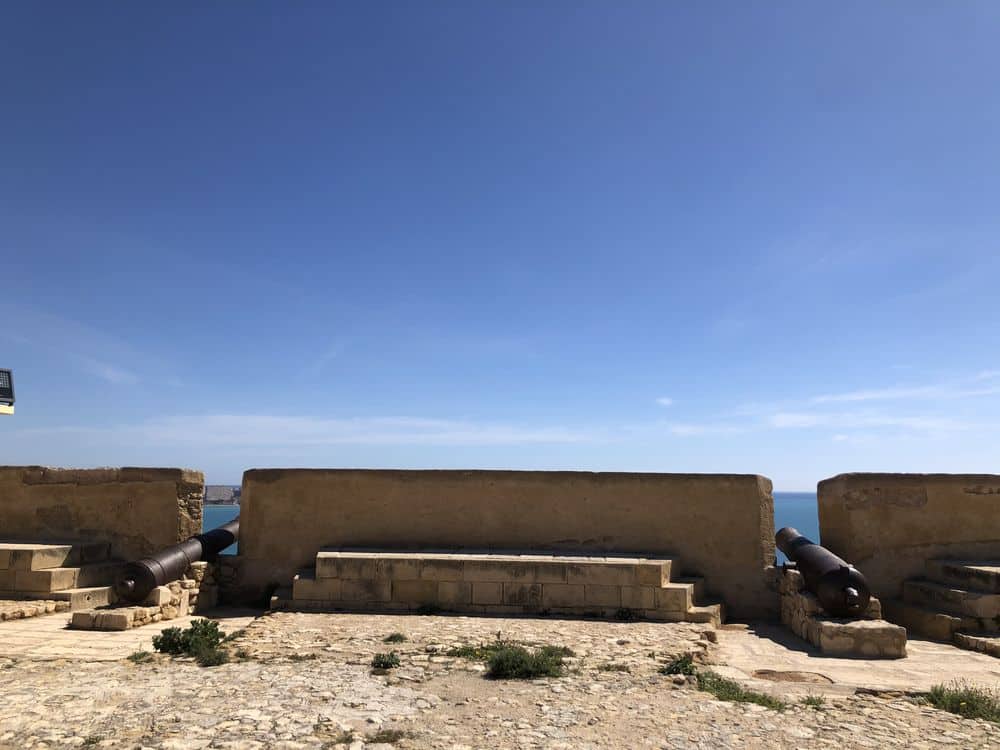
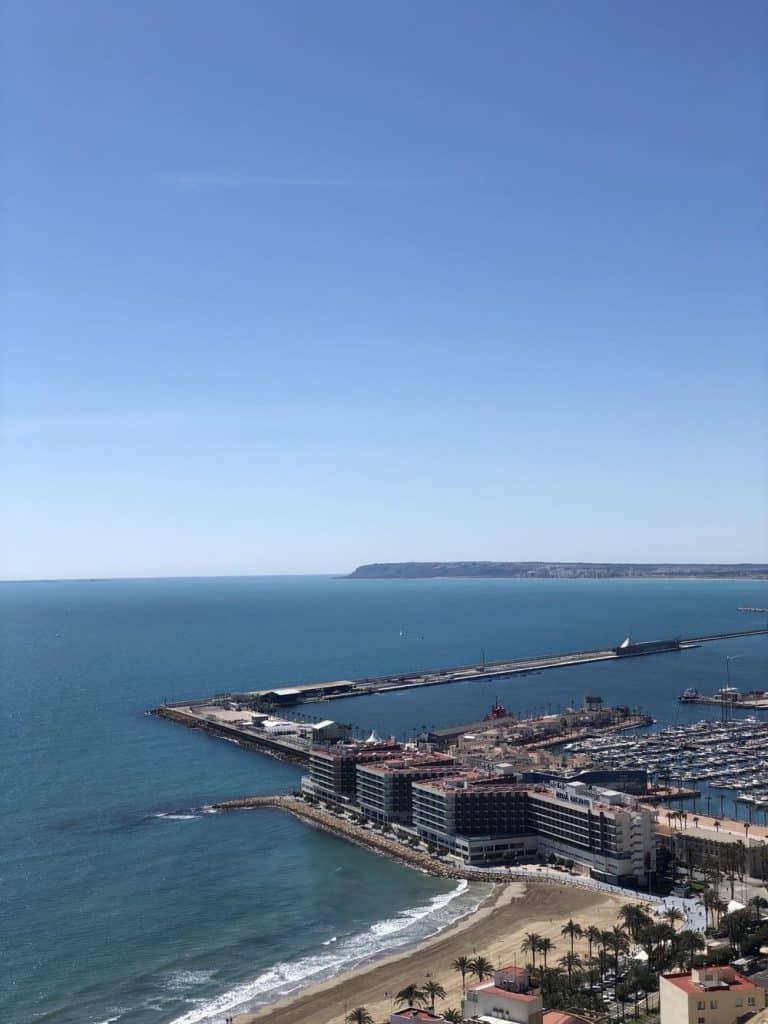

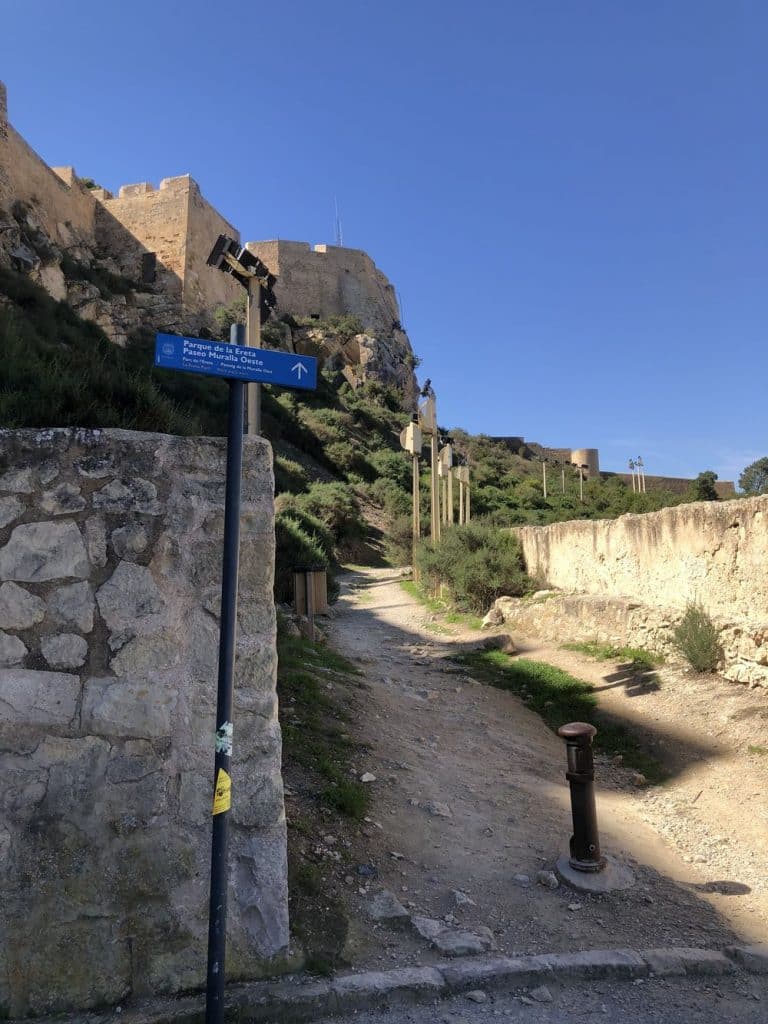
More info on the Alicante City Council website.

